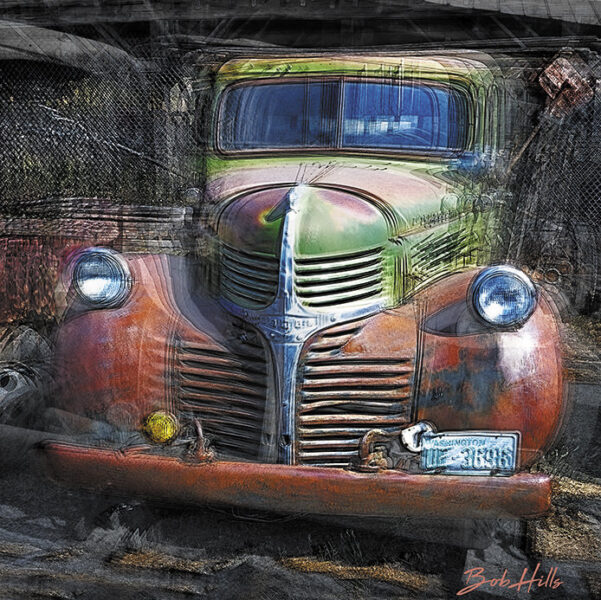
Yellow House on the River by Bob Hills
Linda Shannon-Hills
If you’ve taken the opportunity to visit Bob Hills Photographics during an SBR ARTwalk, you may have been confused by his work. Are his images a photograph or a painting?
This confusion is precisely what Bob works to create. His digital artwork is eye-catching, energetic, and very enjoyable to view. Everything you see originates as images from his camera and then is processed into something more abstract and painterly. While he continues practicing “straight photography,” his primary interest in using a camera is to create this more complex digital artwork.
As Bob describes it, to be an excellent digital artist, you need all the skills of a fine art photographer. You must understand the importance of composition, focus, depth of field, tone, and color. Then, you need to know when and how to break the rules of photography. In general, digital art can originate from using computers to electronically draw or paint onto a blank screen, using a photo or photos as the basis for the image, or using computer-based AI (artificial intelligence). Bob’s work is solidly photo-centric, and he shuns the use of AI. Bob experiments with various styles, but his go-to style tends to have strong subjects, more saturated colors, bold outlines (like ink outlines on a watercolor painting), and the use of textures.

Old Dodge Flatbed by Bob Hills
Bob has mastered building composite images since he discovered Adobe Photoshop years ago. That is taking elements from various images and combining them into one composition using the computer. Bob has recently migrated to using his camera more to create artistic effects. He frequently uses intentional camera movement (ICM) to blur images and in-camera multiple exposures as the basis of his work. Sometimes, his work combines all of the above.
In Bob’s words, he calls it “embracing imperfection.” After many years of making precise images, these camera techniques allow for much more freedom in creating artistic images. The results can be more like drawings and paintings than traditional photographs. When returning to a location time after time, these camera techniques can yield new and different images every time, which is not likely when shooting straight photography.
Bob enjoys watching people study his multiple-exposure work, and he often combines a right-side-up image with an upside-down image of the same or similar subject. The subject, composition, and color immediately pull people in. Then, they find the images don’t always make sense (in the vein of a straight photograph). That leaves the viewer trying to unscramble the ambiguity before their eyes. Since these images are untraditional, it’s natural that not everyone will like them. Bob understands that but is happy when anyone takes the time to scrutinize his work.
You are invited to visit our home to view his art. His studio will be open during the SBR ARTwalk Studio Tour on Nov. 1 and 2. Bob is a founding SBR ARTwalk artist, having participated in every SBR ARTwalk since the fall of 2013.
